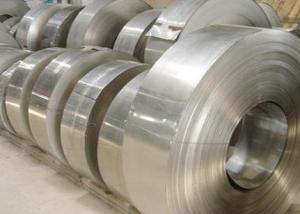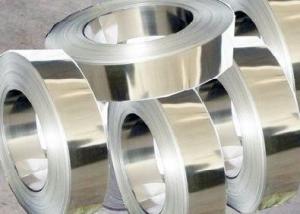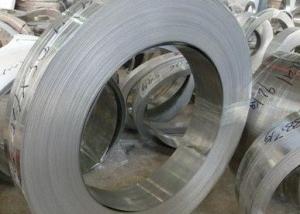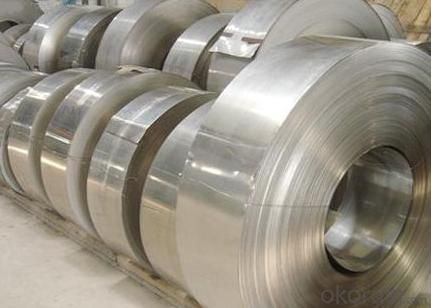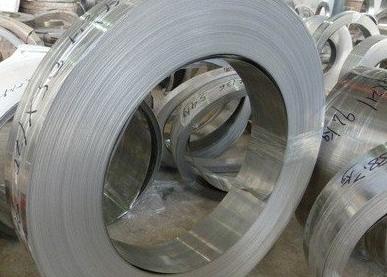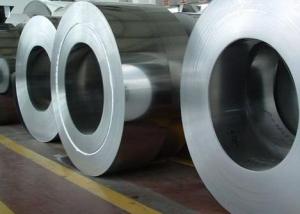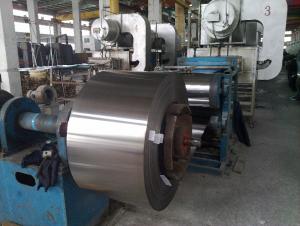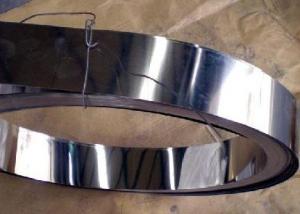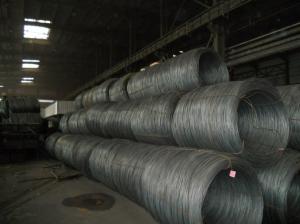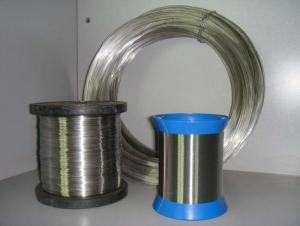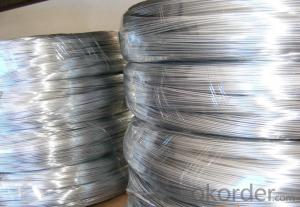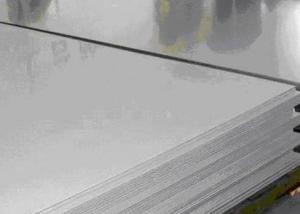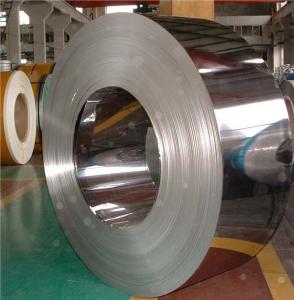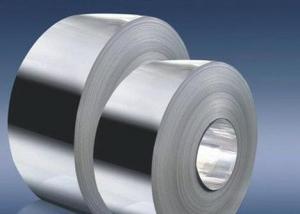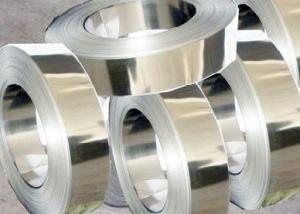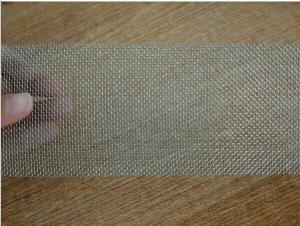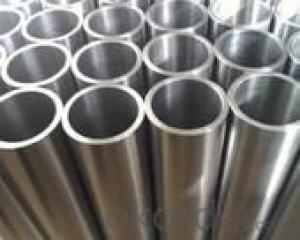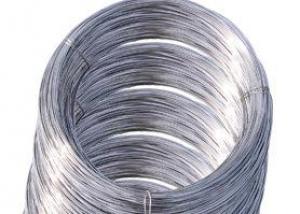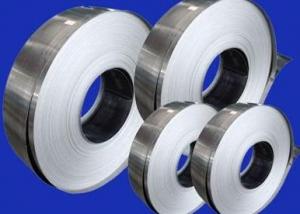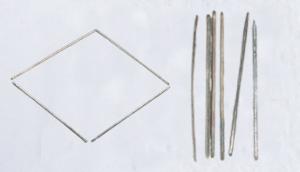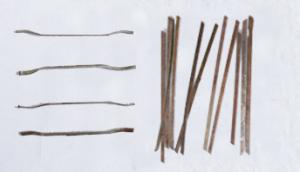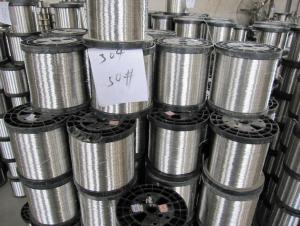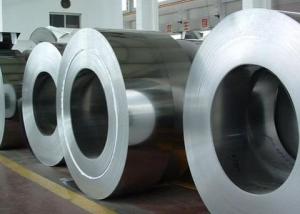316L Stainless Steel Strips
- Loading Port:
- China Main Port
- Payment Terms:
- TT or LC
- Min Order Qty:
- 1 Ton m.t.
- Supply Capability:
- 2000 Tons Per Month m.t./month
OKorder Service Pledge
OKorder Financial Service
You Might Also Like
316L Stainless Steel Strips
1. Chemical composition
|
C |
Si |
Mn |
P |
S |
Ni |
Cr |
|
Max0.03 |
max1.00 |
max2.00 |
max0.045 |
max0.03 |
10.00-14.00 |
16.00-18.00 |
2. Mechanical properties
|
Yield Strength |
Tensile |
Elongation |
Hardness (HV) |
Hardness (HRB) |
|
≥175 |
≥480 |
≥40 |
≤200 |
≤90 |
3. Standard: AISI, ASTM, GB, EN, DIN, JIS
4. Surface: 2B, NO.1, BA, NO.4, Hairline, SB, Mirror finish, Anti-skid, Cherkered etc.
5. Size: Thickness: 0.3-3mm (cold rolled), 3-40mm (hot rolled)
Width: 18-600mm.
Length: As customers' request.
6. MOQ: 1 Ton
7. Payment terms: T/T or L/C
8. Packing: Seaworthy package with wooden or Iron pallets with the paper and the steel strip, or as customers' request.
9. Delivery time: Usually about 7 days after we confirming the order, or according to your quantity.
If you have any question or demand, pls feel free to contact me.
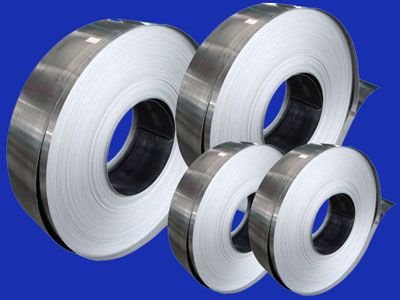
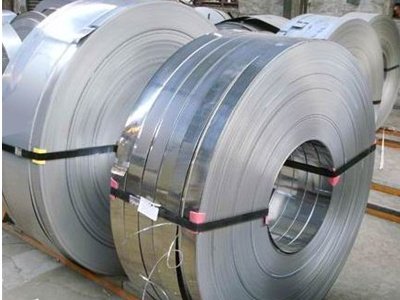
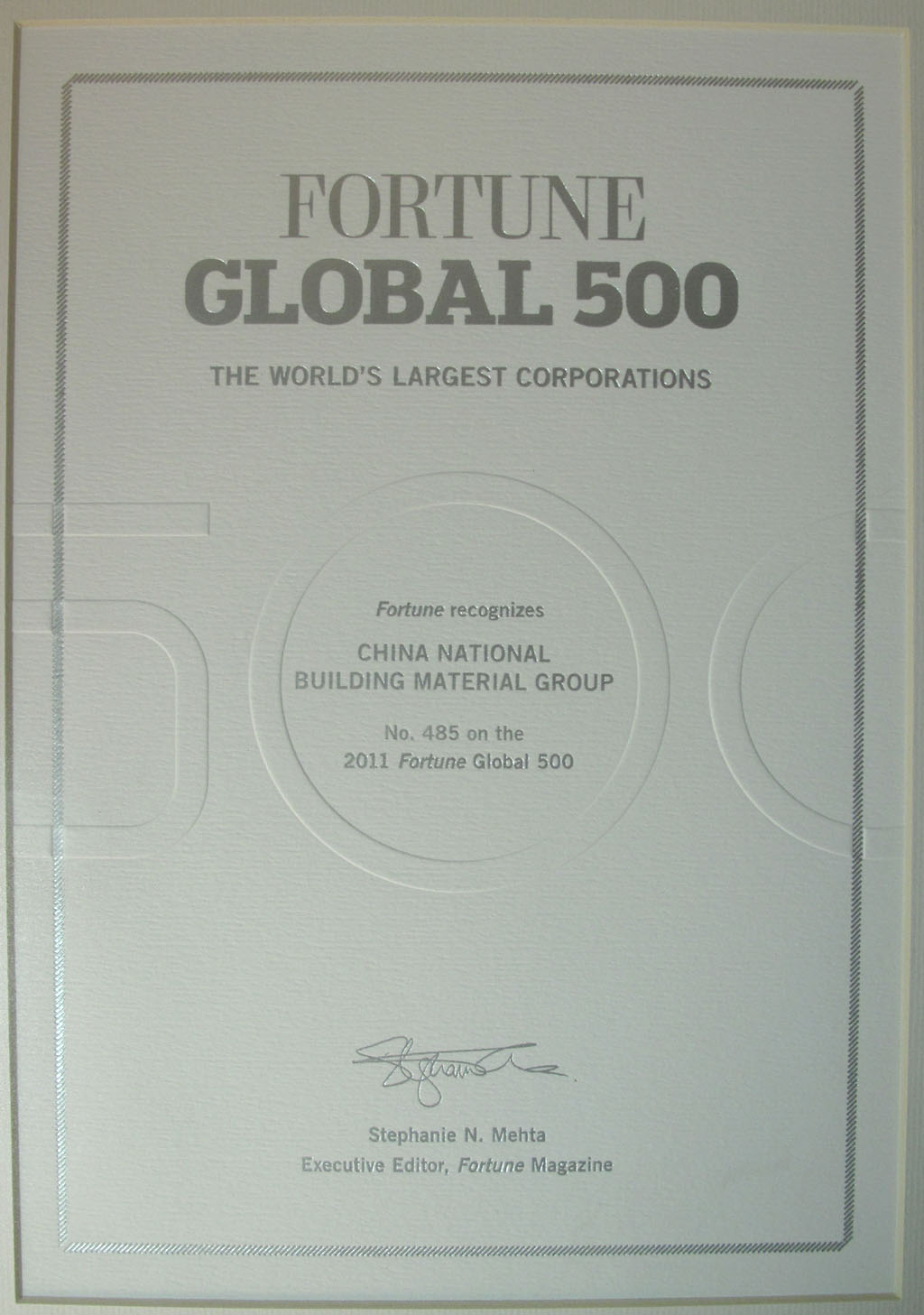
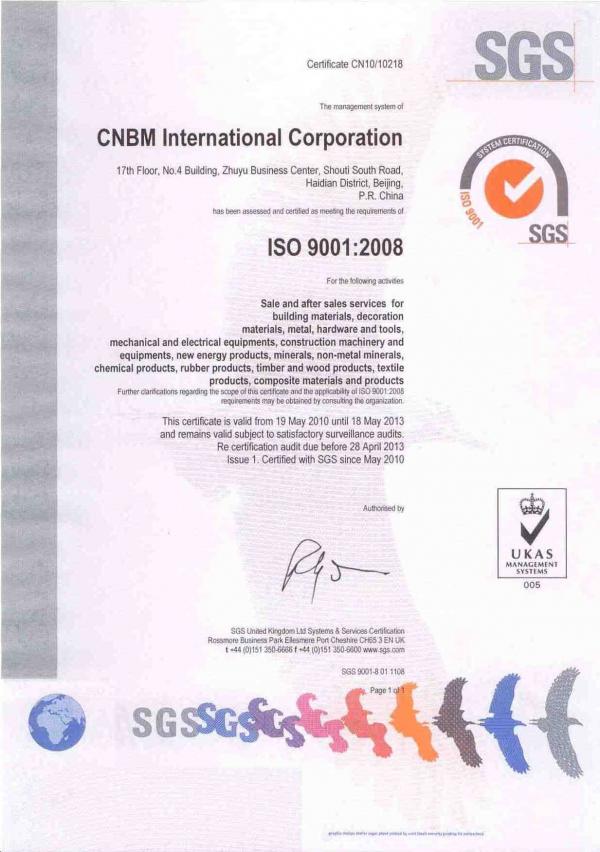
- Q: What are the different types of stainless steel wire springs used in the jewelry industry?
- Stainless steel wire springs are widely utilized in the jewelry sector due to their durability, strength, and resistance against corrosion. These springs come in different types, each serving a specific function. 1. Torsion Springs: Jewelry applications extensively employ torsion springs. These springs store mechanical energy when twisted and offer rotational or torsional force. They are commonly found in clasps, hooks, and closures, guaranteeing a secure and dependable connection. 2. Compression Springs: Jewelry incorporates compression springs that are designed to withstand compressive forces and revert to their original shape when the force is removed. They provide tension or pressure in adjustable bracelets or rings. These springs facilitate flexibility and adjustability, accommodating various wrist or finger sizes. 3. Extension Springs: Extension springs, also known as tension springs, are employed to absorb and store energy when stretched. They are frequently utilized in chain link connectors or necklace extenders, allowing for length adjustment. These springs deliver the necessary tension to keep the jewelry securely in place. 4. Wire Forms: Wire forms are versatile stainless steel wire springs that can be tailored into different shapes and sizes. They are commonly utilized in jewelry for decorative purposes, such as crafting unique pendant or earring designs. Wire forms encourage creativity and flexibility in jewelry design. It is essential to note that stainless steel wire springs utilized in the jewelry industry are generally crafted from high-quality stainless steel alloys. These alloys offer exceptional resistance to corrosion, ensuring that the springs maintain their integrity and appearance over time, even when exposed to moisture or chemicals.
- Q: Can stainless steel wire mesh trays be used for baking?
- Yes, stainless steel wire mesh trays can be used for baking. Stainless steel is a durable and heat-resistant material that can withstand high temperatures, making it suitable for baking purposes. The wire mesh design allows for proper heat circulation, resulting in even baking and browning of the food. The trays are also non-stick, which makes them easy to clean and prevents food from sticking to the surface. Additionally, stainless steel is a non-reactive material, meaning it does not interact with acidic or alkaline ingredients, ensuring that the taste and quality of the baked goods remain intact. Thus, stainless steel wire mesh trays are an excellent choice for baking various items such as cookies, pastries, bread, and more.
- Q: Can stainless steel wire be used for wire rope hoists?
- Yes, stainless steel wire can be used for wire rope hoists. Stainless steel wire is known for its high strength, corrosion resistance, and durability, making it suitable for various applications including hoisting. Stainless steel wire rope hoists are commonly used in industries such as construction, mining, and manufacturing, where heavy loads need to be lifted and moved with precision and safety. The corrosion resistance of stainless steel ensures that the wire rope hoists can withstand harsh environmental conditions or exposure to chemicals, maintaining their performance and longevity. Additionally, stainless steel wire rope hoists are often preferred in industries where hygiene and cleanliness are essential, such as the food and pharmaceutical sectors, due to the material's non-reactivity and ease of cleaning.
- Q: How does stainless steel wire perform in high-impact applications?
- Stainless steel wire is an excellent choice for high-impact applications due to its exceptional strength and durability. Its unique composition and manufacturing process make it resistant to corrosion, rust, and wear, making it highly suitable for environments with exposure to moisture, chemicals, or extreme temperatures. In high-impact applications, stainless steel wire can withstand heavy loads and intense forces without losing its integrity. It has high tensile strength, allowing it to resist deformation and maintain its shape even under extreme pressure. This property makes it ideal for applications that involve repetitive or sudden impacts, such as springs, cables, and mesh screens. Furthermore, stainless steel wire's ability to tolerate high temperatures without compromising its structural integrity is another advantage in high-impact applications. It can withstand thermal expansion and contraction, making it suitable for use in environments with fluctuating temperatures. Stainless steel wire is also known for its excellent resistance to fatigue, which is crucial in high-impact applications where materials are subject to repeated stress and strain. It can endure cyclic loading without experiencing a significant reduction in its performance, ensuring long-term reliability and safety. Additionally, stainless steel wire has excellent ductility, allowing it to absorb energy during impact and minimize damage to the structure or components it is used in. This property makes it an ideal choice for applications that require shock absorption and impact resistance, such as automotive components, architectural structures, and industrial machinery. Overall, stainless steel wire is highly reliable and performs exceptionally well in high-impact applications due to its strength, durability, resistance to corrosion and wear, high-temperature tolerance, fatigue resistance, and shock absorption capabilities. Its ability to withstand intense forces and maintain its structural integrity makes it a preferred choice for various industries where reliability and performance are of utmost importance.
- Q: Stainless steel drawing plate, polishing plate, mirror panels of the three differences
- Stainless steel mirror panel refers to: stainless steel mirror panel, double 8K plate, also known as mirror panel, with grinding fluid through the polishing equipment in stainless steel plate polishing, so that the plate brightness as clear as a mirror. Stainless steel mirror panel from K numbers are generally: 6K, 8K, 10K, 12K these. From the coefficient of demand to be divided into: universal grinding, 8K, high Pu 8K, general fine grinding, 8K, fine grinding, 8K, super fine grinding, 8K these are, of course, the higher the better. Uses: mainly used in architectural decoration, elevator decoration, industrial decoration, facilities, decoration and other stainless steel products.
- Q: Why do stainless steel screws still rust?
- The stainless steel screws on the shore should be made of 316 stainless steel, which can resist the corrosion of sea water.The stainless steel screws with decorative function should be cleaned and scrubbed frequently so as not to affect the appearance.Consumers should go to reputable manufacturers to choose stainless steel screws. Some of the stainless steel screws on the market do not meet the requirements of the national standards and can not meet the requirements of anti rust.
- Q: What are the different types of stainless steel wire screens for windows?
- There are several different types of stainless steel wire screens for windows, including plain weave screens, twill weave screens, and Dutch weave screens. Each type has its own unique characteristics and benefits, such as different levels of airflow and visibility, as well as varying levels of durability and resistance to corrosion. The choice of which type to use depends on specific needs and preferences.
- Q: Why is there stainless steel bright silk, what is the difference between it and stainless steel wire?
- Stainless steel wire and stainless steel wire, various specifications and models of silk production as raw materials of stainless steel, the origin of the United States, Holland, Japan, the general section is round or flat. Common stainless steel wire with good corrosion resistance and high performance price ratio is 304 and 316 stainless steel wire.
- Q: How are stainless steel wire screens used for pest control?
- Due to their durability, flexibility, and ability to withstand harsh environmental conditions, stainless steel wire screens are widely utilized for pest control. These screens are specifically designed to hinder the entry of pests, including insects and rodents, into buildings or designated areas. Commonly installed on doors, windows, vents, and other openings, these screens create a physical barrier that pests cannot breach. This effectively keeps pests out while still allowing proper ventilation and natural light to enter, ensuring a comfortable living or working environment. The mesh openings of stainless steel wire screens are incredibly small, making it challenging for pests to squeeze through. Furthermore, the fine mesh prevents the infiltration of smaller insects like mosquitoes, flies, and gnats, which not only cause annoyance but also pose health risks. Additionally, stainless steel is highly resistant to corrosion, rust, and damage caused by weather or UV exposure. This quality ensures the longevity of the screens, even in outdoor or high-moisture areas. Moreover, they are easy to clean and maintain, contributing to their effectiveness in pest control. Furthermore, compared to other pest control methods involving chemicals or pesticides, stainless steel wire screens are environmentally friendly. By physically obstructing pests from entering, these screens minimize the need for harmful chemicals, ultimately promoting a safer and healthier environment for humans and pets. In conclusion, stainless steel wire screens provide a reliable and sustainable solution for pest control. They offer a robust barrier against pests without compromising the functionality or aesthetics of the space in which they are installed.
- Q: What are the different types of stainless steel wire rope slings?
- There are several different types of stainless steel wire rope slings available in the market, each designed to meet specific requirements and applications. Some of the common types include: 1. Single-leg slings: These consist of a single stainless steel wire rope with a loop eye at one end and a hook or other attachment point at the other end. They are typically used for light to medium-duty lifting applications. 2. Double-leg slings: These are similar to single-leg slings but have two legs with loop eyes at both ends. They are commonly used for heavier loads or when additional stability is required. 3. Triple-leg slings: These consist of three legs with loop eyes at both ends of each leg. They are suitable for lifting and securing heavy and bulky loads, offering increased stability and load distribution. 4. Multi-leg slings: These slings have more than three legs, typically four or more, and are used for extremely heavy or irregularly shaped loads where additional support and control are necessary. 5. Adjustable slings: These slings have a mechanism that allows for easy adjustment of the length of the legs. They are ideal for situations where the load height or distance varies. 6. Endless slings: These slings are made from a continuous loop of stainless steel wire rope and can be wrapped around the load in various configurations to provide a secure lifting solution for odd-shaped objects. 7. Grommet slings: These slings are made by forming a loop at each end of the stainless steel wire rope and then attaching a master link or other fitting to create a secure lifting point. 8. Basket slings: These slings consist of a length of stainless steel wire rope formed into a loop with both ends connected to a master link or other attachment point. They are commonly used for lifting loads with multiple attachment points or for creating a basket-like support. It is important to choose the right type of stainless steel wire rope sling based on the intended application, load capacity, and environmental conditions to ensure safe and efficient lifting operations.
1. Manufacturer Overview
| Location | Shandong,China |
| Year Established | 2005 |
| Annual Output Value | Above US$5.3 Million |
| Main Markets | Europe, China |
| Company Certifications | ISO9001:2000 |
2. Manufacturer Certificates
| a) Certification Name | |
| Range | |
| Reference | |
| Validity Period |
3. Manufacturer Capability
| a) Trade Capacity | |
| Nearest Port | Tian Jin |
| Export Percentage | 30% |
| No.of Employees in Trade Department | 40 People |
| Language Spoken: | English;Chinese |
| b) Factory Information | |
| Factory Size: | Above 50,000 square meters |
| No. of Production Lines | Above 8 |
| Contract Manufacturing | OEM Service Offered;Design Service Offered |
| Product Price Range | Average |
Send your message to us
316L Stainless Steel Strips
- Loading Port:
- China Main Port
- Payment Terms:
- TT or LC
- Min Order Qty:
- 1 Ton m.t.
- Supply Capability:
- 2000 Tons Per Month m.t./month
OKorder Service Pledge
OKorder Financial Service
Similar products
Hot products
Hot Searches
Related keywords
